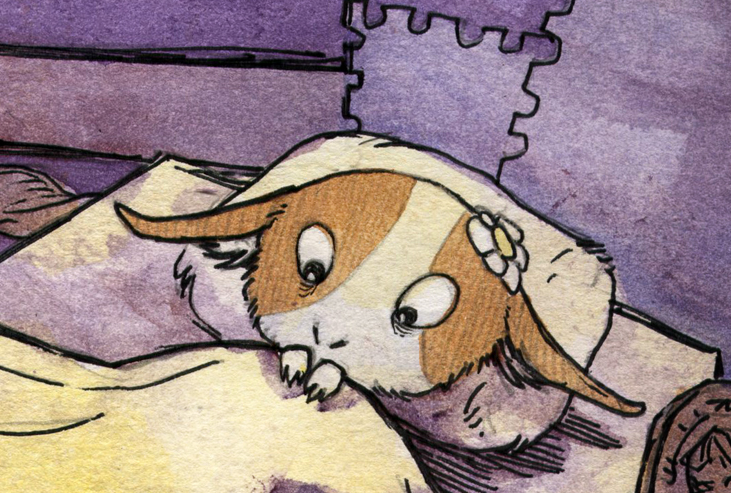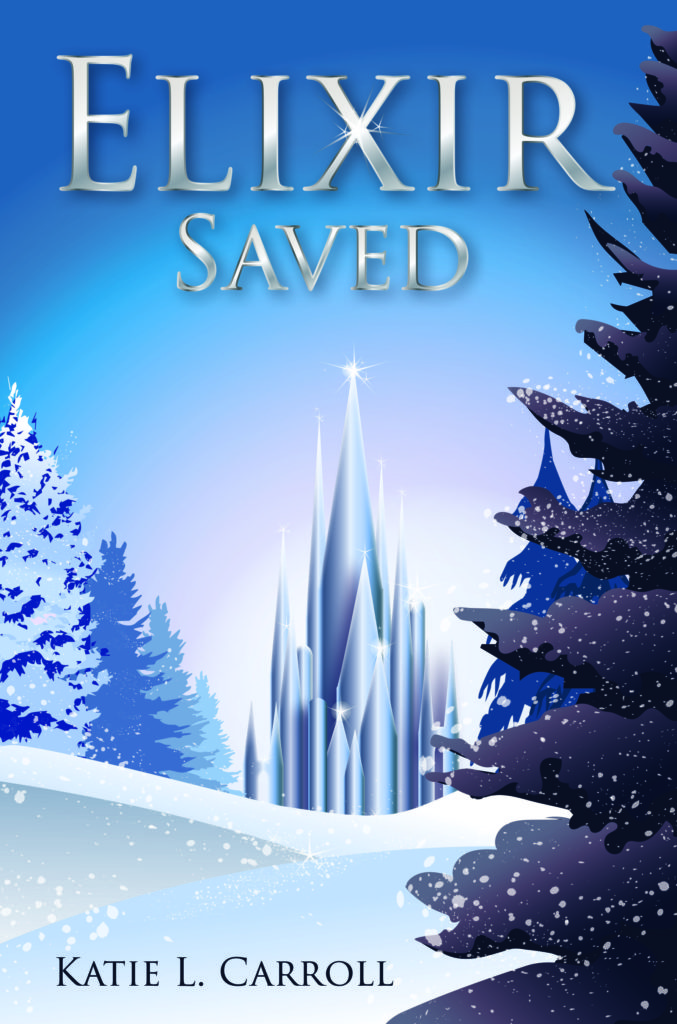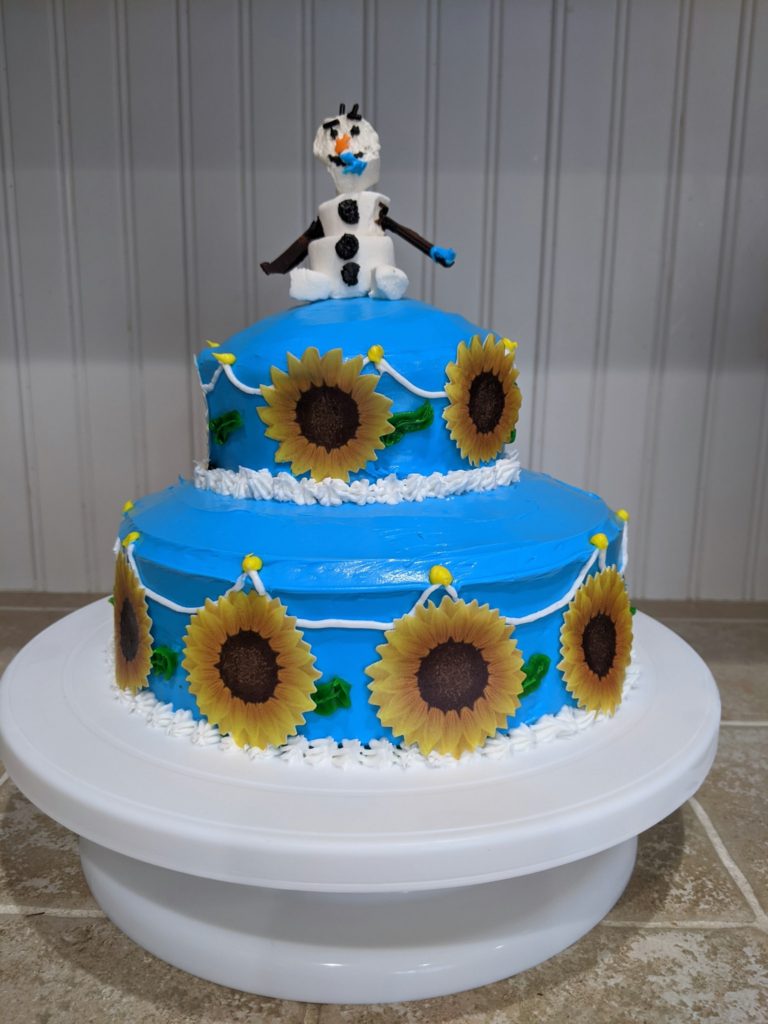I’m going to start today’s post by telling you something.
Lately I’ve been thinking about the Fibonacci sequence (really, haven’t we all…no?). Basically, if you start with 0 and 1, it’s a series of numbers where the sum of the two previous numbers add up to the next number in the sequence: 0, 1, 1, 2, 3, 5, 8, 13, 21, 34, 55, 89, etc… (0+1=1, 1+1=2, 1+2=3, 2+3=5, 3+5=8, etc…).
It’s a tidy little pattern, and with some easy arithmetic (at least in the beginning), you can figure out what the next number is. In a world that seems to be getting more chaotic by the minute, I like the predictability of the pattern.
On graph paper, you can connect the opposite corners of boxes that are the size of each number and you get the Fibonacci spiral. Let me show you that.
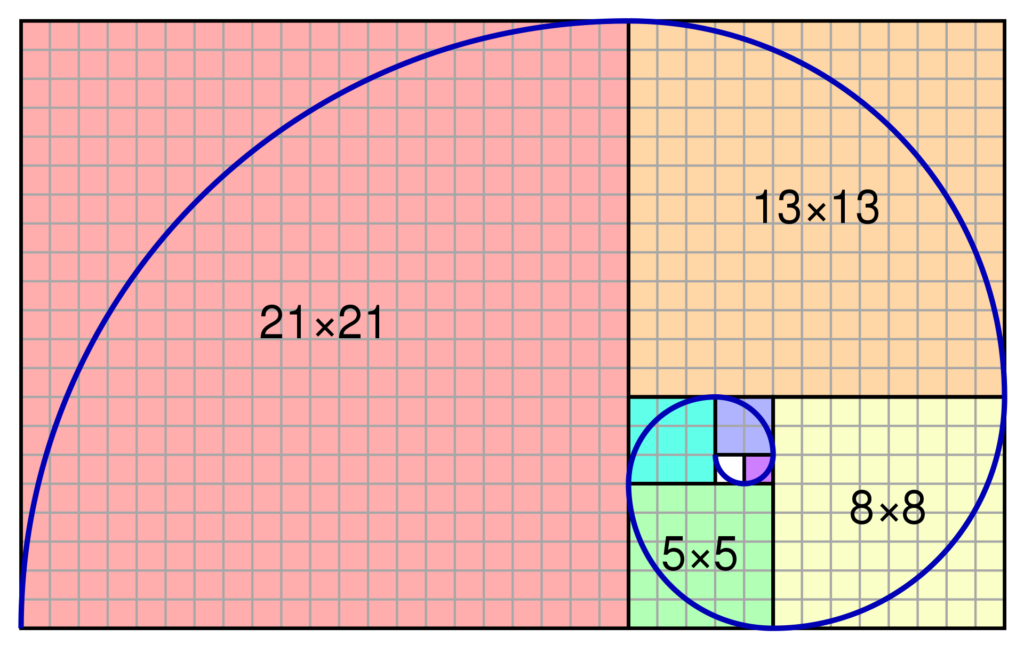
It’s a neat little mathematical trick, but you’re probably thinking, so what? It’s a bunch of numbers that form a pattern. Well, there are lots of applications in real life that use this sequence, like computer algorithms. But the ones I’m most interested in are related to nature (for further reading see “How are Fibonacci numbers expressed in nature?” by Robert Lamb).
Take the sunflower. Let me show you this sunflower I grew in my yard.
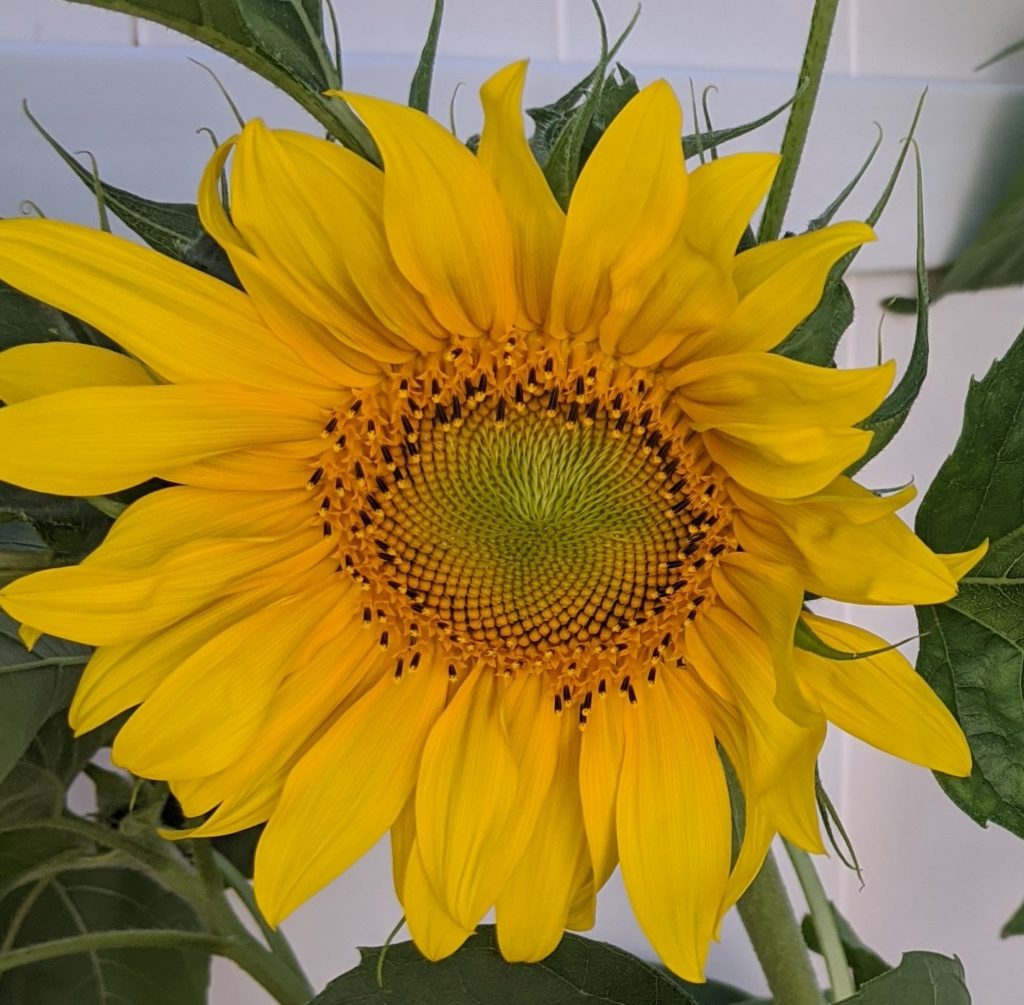
Notice the spiraling pattern of the seeds in the center of the sunflower. (Have you guessed where I’m going with this yet?) Turns out in most sunflowers–it is nature after all, so with many outside factors, it’s not true for every sunflower–the number of spirals correspond with the Fibonacci sequence. From pine cones to spiral galaxies, this pattern shows up in so many places in our universe.
Yet, there’s a lot more to sunflowers than understanding the pattern of it. What do they smell like? What sound do they make blowing in a late summer breeze? What does it taste like when you pop open the shell of a roasted seed to get to the salty crunch in the middle? What’s a situation where you might think of a sunflower and what emotions might that evoke?
There are as many answers to the above questions as there people in the world.
Now think about if I just showed you the image with the Fibonacci spiral and didn’t tell you about it at all. Or if I just told you about the pattern and didn’t give you a visual. And what if I didn’t add in the bit about the sunflowers? Or what if I did include the part about the sunflowers following the pattern, but I didn’t ask you all those other questions about them?
All this telling and showing is what helps me to figure out the world. Knowing the math behind the nature adds yet another layer to the flower that makes me appreciate it even more. The sunflower helps me understand the Fibonacci sequence and vice versa. In nature writing, all this might be important to include, but in prose writing, it’s probably not.
Sometimes seeing a thing makes more sense than having it explained. But sometimes having a thing explained makes you see it in a whole new way. Finding the right balance between the two and understanding what your end goal is makes all difference in what to include in your writing.
Here, I included a lot. Even though the old writing adage is “show, don’t tell,” I wanted to explain the Fibonacci sequence by telling you about it and showing it in visuals, which included the sunflower. I also wanted to inspire you to think deeper about the sunflower. I suppose you could say I wanted to be academic in the beginning and move into the more poetic as we went along.
For a novel, you certainly don’t want to explain the Fibonacci sequence when describing a sunflower. Unless maybe your narrator is a scientist or a mathematician and that’s important to how they see the world and express themselves through it. But for most narrators that won’t be the case. So to strike the right balance, I find it’s best to see the world through their eyes. What aspects of the sunflower would they observe given their state of mind to convey something important about them and the story?
Also what does the reader need to know and care about? Perhaps simply telling them a thing is a sunflower is enough (sometimes I think as writers we can get too caught up in the showing) and you don’t need to immerse them in experiencing the sunflower. The reader can conjure the image themselves with just the word and no showing is necessary. Or perhaps not. Maybe this is a moment in the story when you really do want to take the time to show them the flower and all that it means.
How do you decide? Of all the above stuff I wrote about sunflowers and all the things about sunflowers that I made you think about, what’s important? The answer to that is it’s all relative. It all depends on who is telling the story and what the person who is reading it is supposed to get out of it. And I’m afraid that is only something you, as the writer, can answer.
